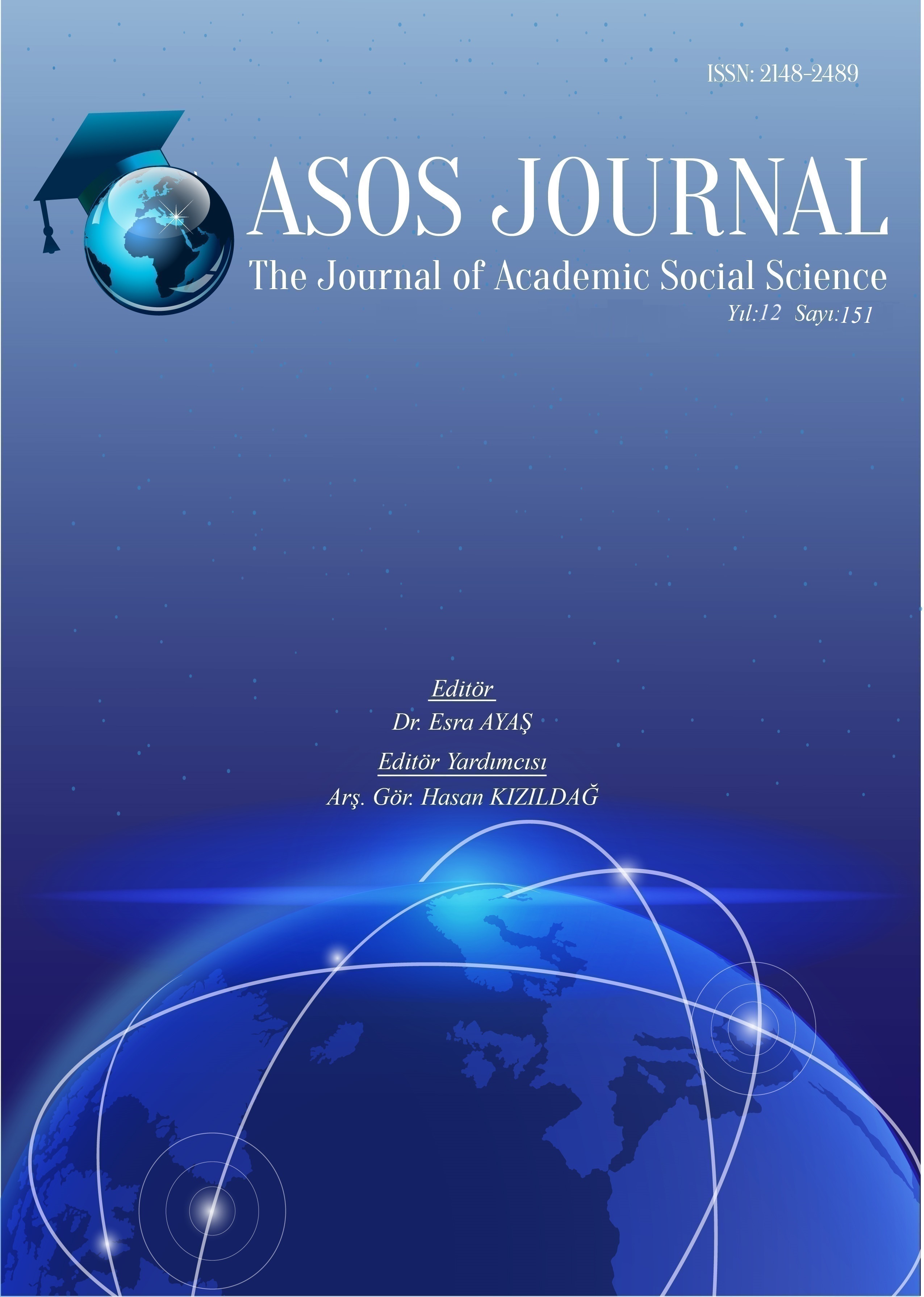Author :
Abstract
Bir insanın veya devletin yaşadığı coğrafya, onun yaşamını etkileyen önemli faktörlerdendir. Devletler, politikalarını bulundukları Coğrafya’ya göre ve insanlar yaşam tarzlarını bulundukları coğrafya’ya göre şekillendirir. Geniş bir coğrafyaya yayılmış olan Hitit imparatorluğu, Aşağı Ülke (Konya Ovası) ve Yukarı Ülke (Amasya Yöresi) olmak üzere iki büyük birime ayrılmıştı. Bu iki bölge arasındaki alanlar doğrudan merkeze bağlı konumdadırlar. Bu geniş toprakların yönetimim için eyaletler oluşturulmuştu. Hititler, Tevrat, Eski Mısır ve Babil yazılı kaynaklarından tanınmaktadırlar. Hititler, Hint-Avrupa kavimlerindendir. Ancak bu kavimlerin vatanlarını terk etmeden önce yüksek bir kültür seviyesine ulaşmamış olduklarından, anavatanları üzerinde onlara atfedilebilecek maddi eser, mezar ve seramik bırakmamışlardır. Bu nedenle anavatanlarının neresi olduğu belirlenememektedir. Bu çalışma ile Anadolu Tarihi Coğrafyasını başlatan Hititler ve onların kadim düşmanı, bazı akademisyenlere göre Prototürk olan Kaşkalarla mücadelelerinde yazılı metinlere yansıyan toponomlar ve topoğrafyaların ifadelendirilmesi amaçlanmıştır. Konu ile ilgili geniş bir literatür taraması yapılarak elde edilen bilgiler ışığında Hitit-Kaşka ilişkileri, bu ilişkinin sebepleri, bu ilişkilerde yazılı metinlere yansıyan toponom ve topoğrafya lokalizasyonları açısından değerlendirilmiştir. Anadolu’nun iskânı açısından elde edilen bilgiler tarihi coğrafya açısından irdelenmiştir. Hitit kaynaklarına göre bağımsız boylar halinde yaşayan göçebe, dini duygulara saygısı olmayan ve yağma düşkünü olan Kaşkalar, şehirleri sıklıkla Hititler tarafından yakılsa da yerleşim yerlerini hızlıca tekrar doldurur veya başka yere taşırlardı. Bu, günümüzde Kaşka yerleşimlerinin arkeolojik manada bulunmasını zorlaştırmakta ve Kaşkalara ait kültürel materyallerin tanımlanmasında güçlüklere yol açmaktadır. Maşat Höyük tabletleri başta olmak üzere Boğazköy ve Ortaköy’de bulunan tabletlerin kaynaklığında Sedat Alp’in Tapigga’nın Maşat Höyük olduğunu tespit etmesi sayesinde Yukarı Ülke’nin tarihi coğrafyası hakkında bilgilerimiz artmış ve Maşat Höyük metinlerinde geçen coğrafi isimlerin yerleştirilmesinde önemli adımlar atılmıştır. Ancak halâ yerleştirilmesi yapılamayan pek çok yer mevcuttur.
Keywords
Abstract
The geography where a person or a state lives is one of the important factors affecting his life. States shape their policies according to the geography they are in, and people shape their lifestyles according to the geography they live in. The Hittite empire, which spread over a wide geography, was divided into two large units: the Lower Country (Konya Plain) and the Upper Country (Amasya Region). The areas between these two regions are directly connected to the center. States were created to manage these vast lands. They are known from Hittite, Torah, Ancient Egyptian and Babylonian written sources. Hittites are one of the Indo-European tribes. However, since these tribes did not reach a high level of culture before leaving their homeland, they did not leave any material artifacts, graves or ceramics that could be attributed to them on their homeland. For this reason, it is not possible to determine where their homeland is. With this study, it is aimed to express the toponyms and topographies reflected in the written texts in the struggle of the Hittites, who started the Anatolian Historical Geography, and their ancient enemy, the Kashkas, who were Prototurks according to some academics. In the light of the information obtained by conducting an extensive literature review on the subject, Hittite-Kaşka relations were evaluated in terms of the reasons for this relationship and the toponymy and topography localizations reflected in the written texts in these relations. The information obtained regarding the settlement of Anatolia was examined in terms of historical geography. According to Hittite sources, the Kashkas, who lived as independent tribes, were nomadic, disrespectful of religious feelings and fond of looting, quickly repopulated their settlements or moved them to another place, even though their cities were often burned by the Hittites. This makes it difficult to find Kashka settlements archaeologically today and causes difficulties in identifying cultural materials belonging to Kashkas. Thanks to Sedat Alp's identification of Tapigga as Maşat Höyük as the source of the tablets found in Boğazköy and Ortaköy, especially the Maşat Höyük tablets, our knowledge about the historical geography of the Upper Country has increased and important steps have been taken in placing the geographical names mentioned in the Maşat Höyük texts. However, there are still many places where placement cannot be done.





